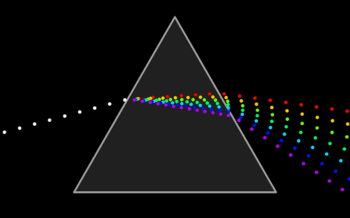King Leroy visits Sir Penguin Newton's Laboratory
When King Leroy requested an audience for Sir Penguin Newton, he expected the bizarre scientist to come to his royal palace. But surprisingly the eccentric scientist felt unprepared to leave his laboratory. He sensed that he was "just on the cusp" of a big discovery.
When King Leroy arrived at the laboratory, Sir Penguin Newton showed to him an array of triangular, crystal prisms. He lined them up just perfectly so that moonlight shining through the window would directly hit one prism, causing a rainbow to "spill out" the other side. Then he lined up other prisms to receive the rainbow, which then caused the colors to recombine into a single beam of white light.
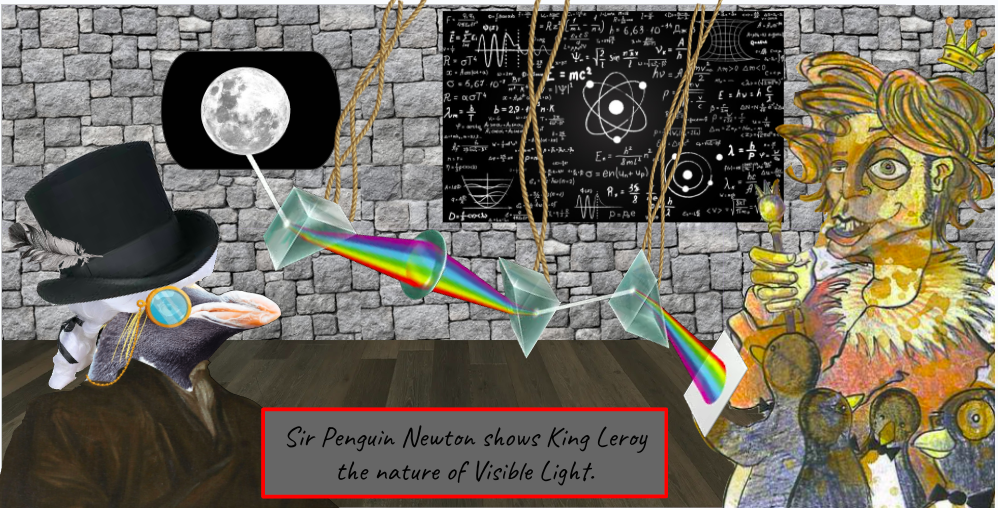
"What do you think?" Sir Penguin Newton asked King Leroy.
"It's very beautiful," King Leroy said. "Is this connected to your plan for the efficient movement of penguins?"
Sir Penguin Newton laughed. "Movement? Well, this is the fastest thing that moves in the universe. In a vacuum. But no, this is just a, umm, side project."
"Oh," King Leroy said, a little offended that Sir Penguin Newton doesn't devote 100% of his mental efforts to tasks that are clearly in the economic interests of the Antarctic Kingdom. "Nonetheless, maybe you can explain it to me a little bit? Why does the white light split into the rainbow when it hits the crystal?"
Sir Penguin Newton moved over to a blackboard, which was covered with mysterious mathematical equations. He erased all of it with a dirty sock.
"For those with normal ROY G BIV colour-vision, what we perceive as white light is actually a mixed combination of the entire spectrum of visible lights. Each of these colours are actually an electromagnetic disturbance with a particular wavelength.
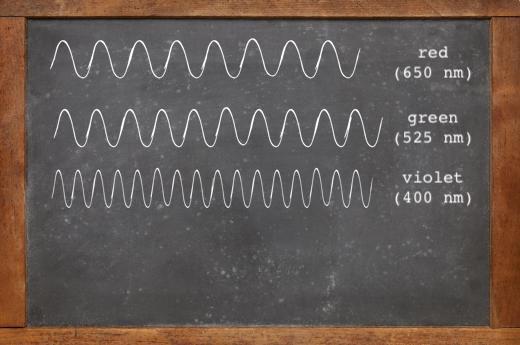
"These electromagnetic disturbances - when traveling through an area of space devoid of matter - travel at identical speeds," Newton announced. "Approximately 300,000,000 meters per second, to be pseudo-precise. But when traveling through matter - air, water, a translucent glass prism [et cetera] - this speed decreases. The more condensed the medium, the slower the electomagnetic waves travel. And the smaller the wavelength of the electromagnetic wave, the slower it travels."
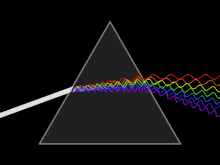
"What do these electromagnetic disturbances slow down when they encounter matter? Why does light slow down when it encounters matter?" King Leroy asked.
"Matter is composed of atoms, which contains subatomic particles that have electrical charges. When an electromagnetic disturbance arrives at an atom, it temporarily disturbs the atom's electrical field, causing something called
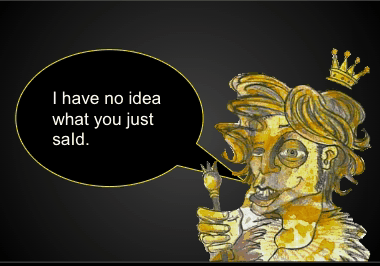
King Leroy stared blankly. "I have no idea what you just said."
"Oh, sorry," Sir Penguin Newton said. "The atoms are like gas stations and the electromagnetic wave is like a car. When there are more gas stations, the car is more likely to run into one, take a momentary stop to buy soda and urinate, and then the car returns to the road, traveling forward. At 300,000,000 meters per second."
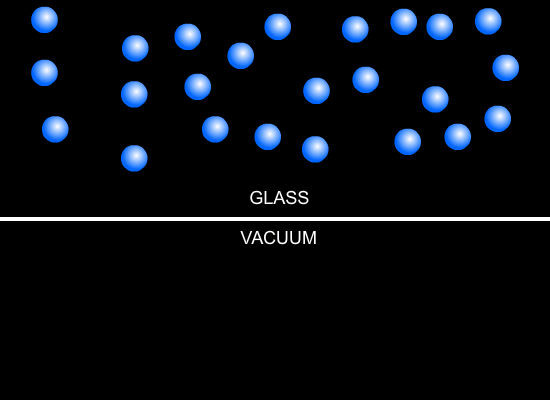
"But why the colours? Why the rainbow?"
"Well white light is a collection of all the colours we see in the rainbow: red, orange, yellow, green, blue, indigo, and violet [ROY G BIV]. And there's a nigh-infinite series of points inbetween each color, there's red-orange, and orangish yellow, and super green with a little blue in it..." and Sir Penguin Newton moved his flightless wing to indicate that this could go on forever.
"Anyhow, each of these colors is an electromagnetic disturbance AKA an electromagnetic wave with a different wavelength. The red side of the colour spectrum has the longest wavelengths of visible light and the violet side of the colour spectrum has the shortest wavelengths. The shorter the wavelength, the greater the electrical energy, and the more likely it will interact with an atom. Thus, more gas station stops, and thus, violet slows down and changes direction more than red."
